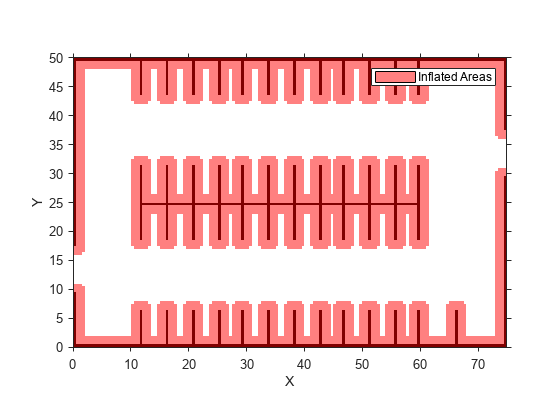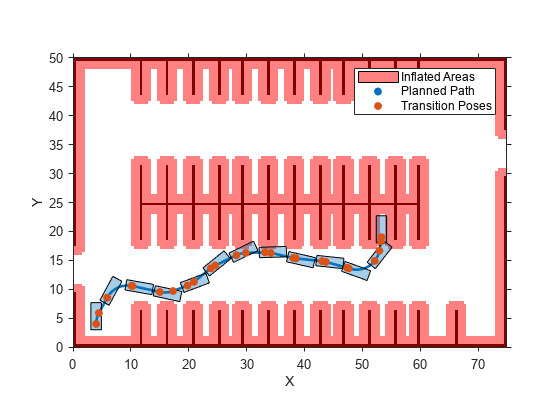driving.DubinsPathSegment
Dubins path segment
Description
A driving.DubinsPathSegment object represents a segment of a planned vehicle
path that was connected using the Dubins connection method [1]. A Dubins path segment is
composed of a sequence of three motions. Each motion is one of these types:
Straight
Left turn at the maximum steering angle of the vehicle
Right turn at the maximum steering angle of the vehicle
A vehicle path composed of Dubins path segments allows motion in the forward direction only.
The driving.DubinsPathSegment objects that represent a path are stored in the
PathSegments property of a driving.Path
object. These paths are planned by a pathPlannerRRT
object whose ConnectionMethod property is set to
'Dubins'.
Properties
Examples
References
[1] Shkel, Andrei M., and Vladimir Lumelsky. "Classification of the Dubins Set." Robotics and Autonomous Systems. Vol. 34, Number 4, 2001, pp. 179–202.
Extended Capabilities
Version History
Introduced in R2018b

